 Photo ©
Keith Williams
Photo ©
Keith Williams
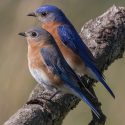
Droughts and Eastern Bluebirds
Climate models are predicting drier conditions and more persistent droughts in North America, and not just in the western regions. In a recent study using data from NestWatchers, scientists were able to conduct the first range-wide analysis on the effects of drought on Eastern Bluebird breeding success.
In our latest blog post, Dr. Reneé Carleton of Berry College explains how data from NestWatch were instrumental in the study, which is unique in how it explores the effects of drought on three different measures of breeding productivity: clutch size, hatch rate, and fledging success. Read about the new study here.
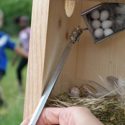
Don’t Forget To Enter 2019 Data
Nesting season 2019 is on track to be a record year, but we want to make sure that everyone gets counted for our upcoming annual report. Don’t forget to enter your data by the end of December to be included in our yearly summary. If you haven’t finished entering data yet, there’s still time before the busy holiday season arrives. This includes bulk uploads, too!
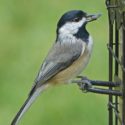
Zooming Through History
Our Nest Quest Go! project is humming along in Zooniverse. Our two most recent projects—Chickadees and Western Bluebirds—containing a total of 7,062 cards, are nearly finished. We could finish today if everyone reading this transcribed just two cards!
We’ve already heard from 16 researchers who are interested in these data. Join our flock this winter, and help us transcribe historical nest records so researchers can better understand the past lives of nesting birds.
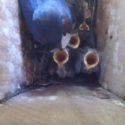
Feeding The Neighbor’s Kids
Researchers in Pennsylvania recently published footage of a male Eastern Bluebird feeding the nestlings of a nearby Tree Swallow pair. Interestingly, the bluebird fed right alongside the swallow parents, which accepted his presence. Watch the footage and read more here!
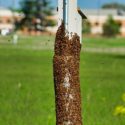
Buzzworthy: When Honeybees Swarm
Have you ever seen a honeybee swarm? NestWatcher Carl Gleditsch reports that in May, a honeybee swarm temporarily took up residence on one of the nest boxes he monitors in Glacier Ridge Metro Park, Ohio. Carl is also a beekeeper and was therefore not alarmed at seeing the mass of bees on the box, which contained nesting Tree Swallows. He went ahead and checked the box anyway; after all, it was only a “small” swarm of 15,000–20,000 bees! [For the record, we would have said it was fine to skip that nest check, even though bees are actually very docile during this time.]
Carl reports that the honeybees were just doing what they naturally do when their hive gets overcrowded—split in half, abscond with the queen, and democratically choose a new cavity. Fortunately for the Tree Swallows, their box was not chosen, and the occupants fledged just fine. As is often the case, no intervention was necessary.